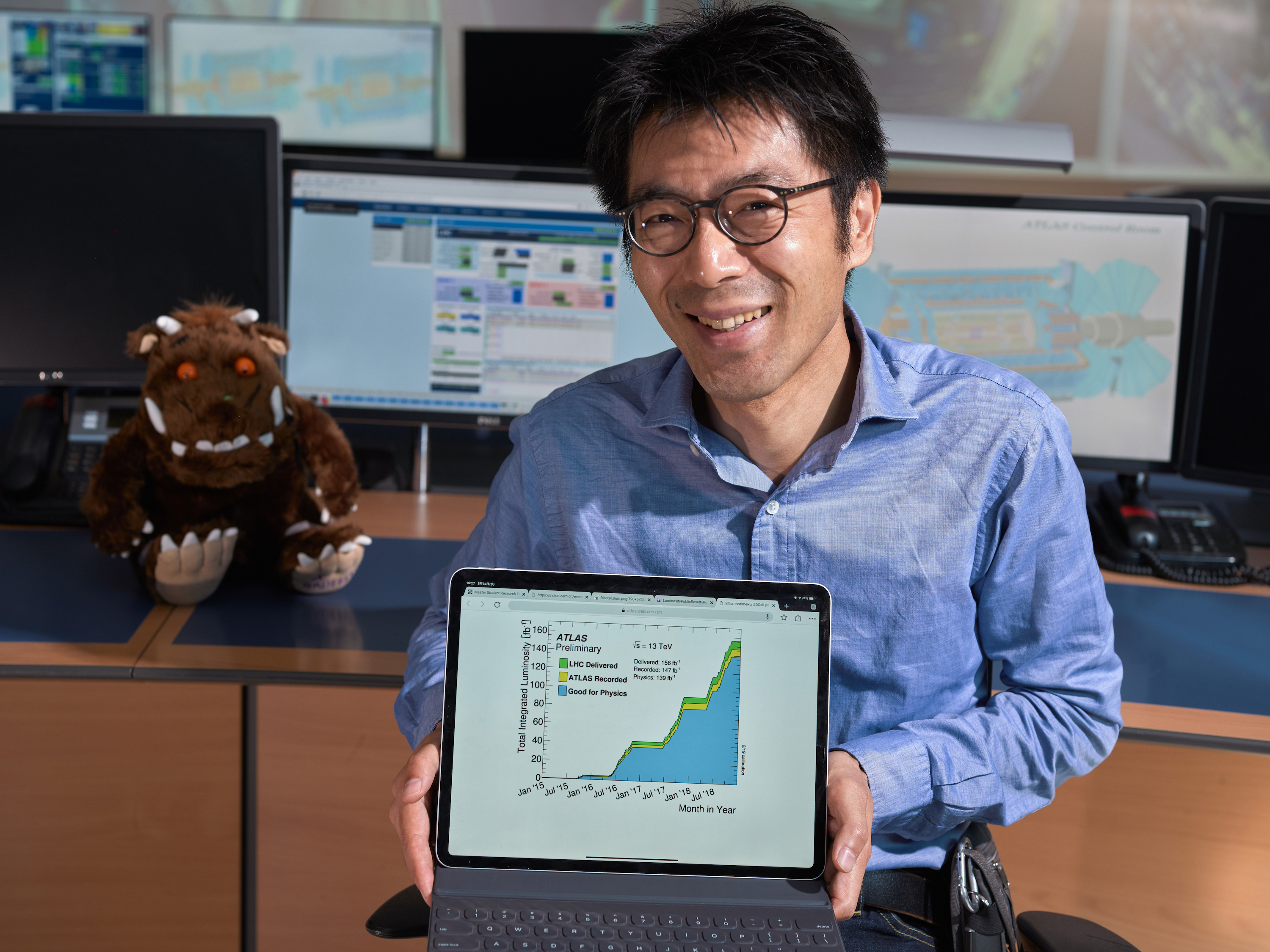ATLAS preparing for collisions in mid-2009
15 December 2008 | By

The full ATLAS Experiment has been operational and taking cosmic ray data since September 2008, and high-energy collisions are scheduled for late summer 2009. Data from cosmic rays that hit the ATLAS detector are valuable to calibrate and synchronize the many detector elements. Even more exciting were the so-called “splash events” that occurred as the LHC was being tuned up starting 10 September 2008. During that time, beam was initially directed at beam collimators just outside the detector, so that a splash of particles would fill much of the detector allowing ATLAS experimenters to prepare the detector for actual running (and also producing some spectacular event images).
During this LHC tune-up period, protons were inserted into LHC at the injection energy without any acceleration, and there were no collisions yet of the two counter-rotating beams of protons. The discovery physics run with full energy and colliding beams will occur when LHC restarts in 2009.

On 19 September 2008 an incident in the LHC tunnel far from ATLAS and the other experiments did substantial damage to portions of the LHC. The repairs to the LHC are underway and will continue until spring 2009 after which the whole machine can be cooled down again for operation. In the meantime, the ATLAS experiment will do a combination of cosmic ray running and improvements to the detector in preparation for the 2009 run. This incident was of course disappointing but scientists have been preparing these experiments for twenty years, and are determined to make the best of the delay.



